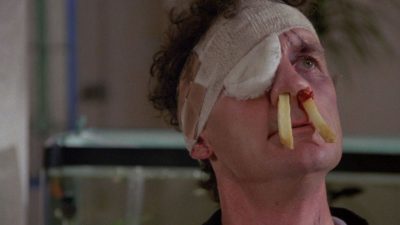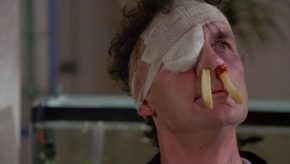Last October I had a lengthy conversation with dancer-choreographer-director Bence Vági about the shows of the Recirquel, old and new genres, and the whole philosophy behind contemporary circus. As I’m rather a person of words than movements, I remembered most vividly how he related cirque danse to poetry. Now that Müpa plays My Land again, the second part of a popular trilogy by the Recirquel, between 1 and 4 July from 7 pm, I checked out some details about it. I realised that this piece is even more poetical than I thought.
As Vági explained in October, My Land won the first prize a couple of years ago at the Edinburgh Festival Fringe that featured 4200 shows. They were all experimental, innovative, pioneering shows; the audience is flowing from one amazement to another, so it’s very hard to stand out. Still, the My Land had such an incredible feedback that even the director couldn’t predict, and as he says, this is something you can’t prepare for. Reviewers praised every aspect of the show, from the technical knowledge of the artists through the thoughtful structure, the ritual mood and the drama to the special visual solutions. Latter was described by the journalist of The Scotsman:
“A glass floor illuminated from beneath is covered with sand, with sections gently smoothed away by the performers to reveal shards of penetrating light.”
They also agreed that something truly special, something incomparable was born that night.
“It is truly a masterpiece and a real milestone in the history of modern circus shows”
– wrote an Italian professor for circus history.
“Any definition of ‘circus’ is surely inadequate to describe what it is Recirquel do”
– another Scotch reviewer added.
But who created this show and from what sources? This reveals the most how close this show is to poetry.
Bence Vági worked with a couple of Ukrainian artists for the first time in 2017 when he was commissioned for the closing ceremony of the FINA Championships. After finishing the international sports event with a worthy international show, Vági stayed in touch with acrobat Andrii Spatar. Soon they organised a joint workshop, and then in Kiev they held a casting with the help of Krisztián Kristóf, manager of the Recirquel. They weren’t looking for people for an existing concept: they expected the young people to show what they bring to the stage from themselves and what is on their mind as artists and people.
It turned out that a common, ever-returning topic of the artists is the relationship to the motherland, the contrast of the strong roots in the soil and the branches aspiring towards the sky, and the origin myths of person and community. Bence Vági created My Land on this basis, and in the stories seemingly from Ukraine and other Eastern European countries he found the universal, human, so also something to relate to his life in Hungary.
Andrii Spatar was the child of Moldavian farmers who left his community very early for education and life as a performing artist. Sergii Materynskyi comes from the same village and even shared his dance master with Spatar, and then he became member of a travelling Italian company. Twin brothers Mykola and Andrii Pysiura were born close to the Polish border and they first joined the circus school because they were very active children with lots of energy to channel into something.
Yevheniia Obolonina comes from an acrobat family, lives in this world ever since her birth, so it was no question that her place is on the stage, too. His partner Roman Khafizov was originally a sportsman, then became Obolonina’s mother’s mentee – this is how the joint show of the two young people came to be, which impressed Bence Vági a lot. Rodion Drahun, like the twins, was six years old when he started to dance and learn circus art. Besides acrobatic numbers, he is also very talented in juggling.
These six young people add their body to this special performative poetry; they merge with the musical and visual world created by even more artists. Miklós Both joined the group with his collection of Moldavian, Tatar and Ukrainian folk music. Inspired from this, as well as liturgic songs, Edina Szirtes wrote the musical basis, and then Gábor Terjés created an atmosphere from it, a resonance between the music and the stage. The costumes were designed by Emese Kasza, the scene was planned by Zsolt Tárnok, and the lights are controlled by Attila Lenzsér and József Pető. The show happens on a specific circus floor: artists literally emerge from dust and they strive higher and higher.
A lot of poets have been writing about how we leave our homeland spatially and temporarily; how we fight, love, suffer, how we go through a destructive or constructive, but surely dynamic life. This time, we can face this universal human experience in an alternative way, not made of words but the language of other arts. Beside director Bence Vági, also his co-workers Tamás Vladár, Aliz Schlecht and Tímea Kinga Maday have helped the artists to bring the best out of themselves and the piece.

























Comments